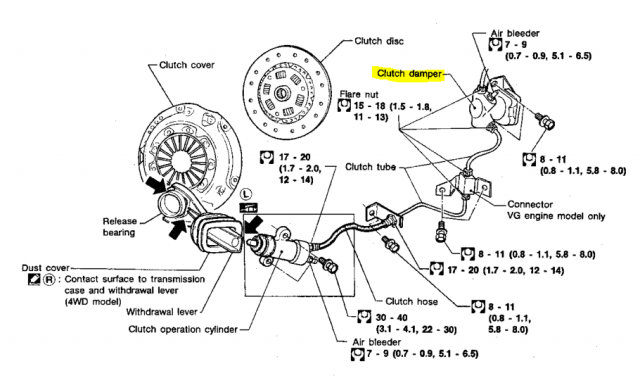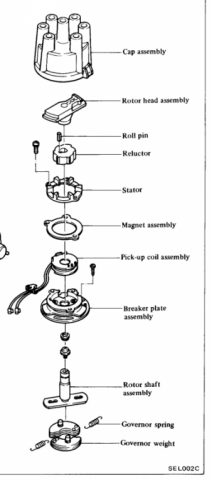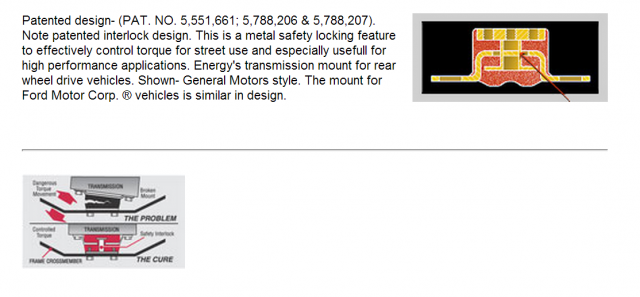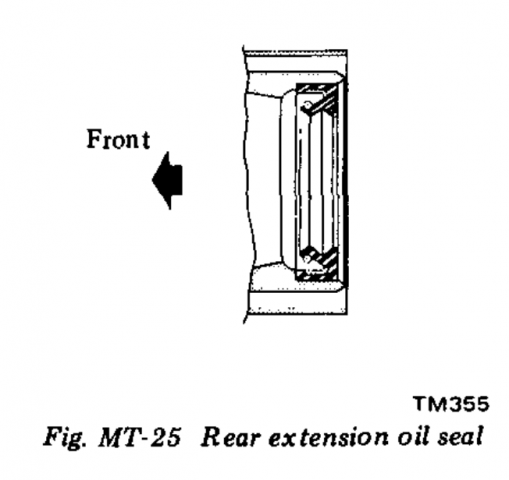
NewZed
Members-
Posts
6700 -
Joined
-
Last visited
-
Days Won
72
Content Type
Profiles
Forums
Blogs
Events
Gallery
Downloads
Store
Everything posted by NewZed
-
Manual Trans? Inexpensive Way to Get More From Your Rear...
NewZed replied to weedburner's topic in Drivetrain
Didn't Nissan have a similar concept for their hydraulic clutches? Used on the Pathfinders, probably others with big tires. Maybe it could be adapted for the GM system. If GM doesn't already have something. -
There's some good information collected here - http://forums.hybridz.org/forum/90-l-series/
-
I don't think this makes sense. It's either/or, I believe. Search for the word "coil" and you'll find some good stuff here: http://www.megamanual.com/ms2/V3trouble.htm
- 2 replies
-
- Megasquirt 3
- Rpm
-
(and 2 more)
Tagged with:
-
Sectioned struts are too low, HELP! (PICS)
NewZed replied to Krinkov's topic in Brakes, Wheels, Suspension and Chassis
The ride height is about right, but he'll still have no droop even after fixing the fender wells and flares. The shock is topped out. It needs to sit somewhere between the limits, not at the top, I think, for a good ride. Just another consideration. The one inch from the 280Z top hat would give one inch of droop, if you choose to stay at 6" ride height, I believe. Looks like some math and parts matching ahead. -
Meth lab or natural gas leak? NBD = No Big Deal? Really?
-
I had a slave cylinder once that only leaked in the middle of its travel. So it would hold pressure and seemed to move from start to finish of the pedal travel but wasn't moving the full distance. Got worse when it was hot. The sure sign that there was a leak was fluid behind the rubber boot. It should always be dry in there. Pop the boot off and look for fluid. I imagine something similar could happen at the master cylinder. The parts store hydraulics sometimes arrive from the manufacturer dirty with machining grit. So a new part can sometimes fail quickly. On adjusting - basically you want a small amount of play between the pedal and the actuating rod. And you want the slave cylinder piston to be starting near the bottom of its bore. But the slave is easy because if you have the rod to the fork too short the piston will just pop out or leak fluid. The first thing you should do is check the boot on the slave cylinder for fluid. It can hold quite a bit without leaking.
-
The dash? You mean gauges? Or power for the engine management system (the motor)? Carburetors or fuel injection? Not clear what you're looking for.
-
Sectioned struts are too low, HELP! (PICS)
NewZed replied to Krinkov's topic in Brakes, Wheels, Suspension and Chassis
This would mean the struts/shocks are fully extended. The simple answer would be different shocks. No idea which. Maybe you have a mismatched set of parts, with the sectioning and the GC kit and the shocks.. Is that a 240Z? Could be a 280 with 240 lights and bumpers. -
The stator ring (with the inward teeth) of mine has wear marks from the reluctor (the inner rotor with outward teeth). I've noticed that Rockauto sells the bushing for the ZX distributor and wondered why. I think that's it. Anyone with a ZX distributor would probably do well to replace the bushing sooner than later. Maybe you need a bushing also. On the parts and the magnet assembly. The magnet assembly is called out as a separate part. I assume that JMortensen bought the pickup coil (with the wires),or the stator, and it came with no magnet.
-
I searched the part number in the link on Google just for fun and it shows up at Courtesy. Your local dealer might be able to get it for no shipping costs. I have an old ZX distributor with a busted magnet myself.
-
Safe versus sorry. You might find that it's just a metal shaving in the splines or something like that. On the Z's, with the IRS, the splines don't move back and forth much, but if there's a foreign body in there it could do some damage over time. Not hard to imagine the yoke getting locked on to the shaft if material gets displaced from the rotational forces of usage. I would pull it, and examine every spline and groove, yoke and shaft, for a problem. Pick and file out the defects and it will probably slide right on like it's supposed to. Edit - also, getting all Newtonian, in addition to pulling and pushing on the pinion shaft and u-joints, there will be pulling and pushing on the tail shaft of the transmission. Just not a good scene. The parts aren't designed for that.
-
The magnet? These guys seem to have it. http://www.nissanpartszone.com/components/1981-nissan-280zx_distributor-221-1405.html
-
Did duragg install a new bushing in the tailshaft housing? The shiny metal behind the seal in your video. Maybe it's tight. You might see score marks on the yoke or the bushing if that's the case. The other possibility is that the end of the tailshaft got dinged up when the gears and bearings were being pulled. If it's a tight bushing you might have friction and wear problems since that's a lubricated bearing surface. If it's tight splines, maybe not, but it might put odd loading on your u-joint and differential pinion shaft. At the least, it would be good to know what's too tight. Most people wonder about how loose the slip yoke is on the tailshaft. It usually has a little bit of wobble to it.
-
Rockauto has both of the parts that you might want. You'll have to look under two categories though: Electrical - Switches and Relays, and Ignition. You could spend $37.38 up to $52.58 Good luck removing the old one.
-
When he says "thread out" doesn't he mean closer, not further? The numbers, 1.5 and 1.75 indicate closer. 1.5 works, 1.75 doesn't.
-
It works great. Post up some examples of the failing Z31 cases. Maybe you were actually wrong twice. Not a dumb idea, many people use them, some for race applications. Actually, I think that the original impetus and design came from a stock setup that kept breaking. The design worked so well that it's now common. Could be just a herd of dumb people though, following along, not realizing their ignorance.
-
Works and works right are two different things. My point was that you don't really even know what parts you're working with. You're just switching settings and hoping. Try to get back to a solid base, and set things up right.
-
It would probably help you you to be more precise in your thinking. The last statement on the DIY instructions for the setup that you say you have is important. Note that "some kind of module with a metal base" is not a choice. http://www.diyautotune.com/tech_articles/using_diyautotune_nissan_trigger_discs.htm
-
v8 swap in 83zxt or not?
NewZed replied to daflyinghawaiin's topic in Gen I & II Chevy V8 Tech Board
Here's a fairly easy and cheap ignitor (transistor) swap - http://www.zcar.com/forum/10-70-83-tech-discussion-forum/285085-hei-ignition-control-module-swap-info-turbos-only.html The 83 turbo doesn't have "pickups", it has an optical sensor with wave-forming circuit that creates a square wave for the ECU to use, to trigger the ignitor. The system in the distributor is generally called a CAS, for crank angle sensor. Could be your problem. Turbo ZX ignition problems seem to be hard to diagnose. -
The GM rubber mounts will fail catastrophically in tension. ES addressed that problem. The tension that they see in this application is inertia from big bumps, and deceleration while in gear pulling the diff nose down. Could wear out the urethane, but the metal interlock controls the damage, In theory. Seems pretty smart. http://energysuspension.com/products/Transmission-Mounts.html
-
v8 swap in 83zxt or not?
NewZed replied to daflyinghawaiin's topic in Gen I & II Chevy V8 Tech Board
If you're not going to learn the 280ZXT engine then the small block is the way to go, since you're familiar with it. Two days ago you were trying to find someone to work on your engine. Apparently you haven't found anyone? Totally different driving experiences between the two, I would guess. Might be easier to just trade for a Camaro. -
I could be seeing it wrong in the video. The lips should point in toward the oil. Posted a picture from the manual. "Stuck" doesn't tell how far the slip yoke went in, if at all.
-
It's very normal. The rubber seals around the outside of the driveshaft sleeve yoke (the part that you stick in there, you're calling it a collar, also called a slip yoke). The sleeve yoke might be sticking because you have the seal (the new rubber) in backward.
-
You never answered TimO's question in #4. There are two parts - the locking part and the electrical switch part. Screws hold them together. Take the component off of the steering column, take screws out that hold the two pieces together, and use a screwdriver to turn the electrical switch. That will tell you if you need a new electrical switch. Leon may have been referring to the weak solenoid power problem. If you had mentioned a click along with the no power, that would be a path to follow. He can add on. If you want to be as effective and time-efficient as possible, measure voltage at the solenoid wire while someone turns the switch. No work required, but you'll know more than you do now. Sounds like you haven't really done much except turn the key and listen to what your brother-in-law said. This is an easy problem. Do you have a meter? Just trying to help you make some progress. If you want to spend $100+ on a new switch, that's your choice too.
-
Bend the bar. It will make sense after you take the switch apart.



